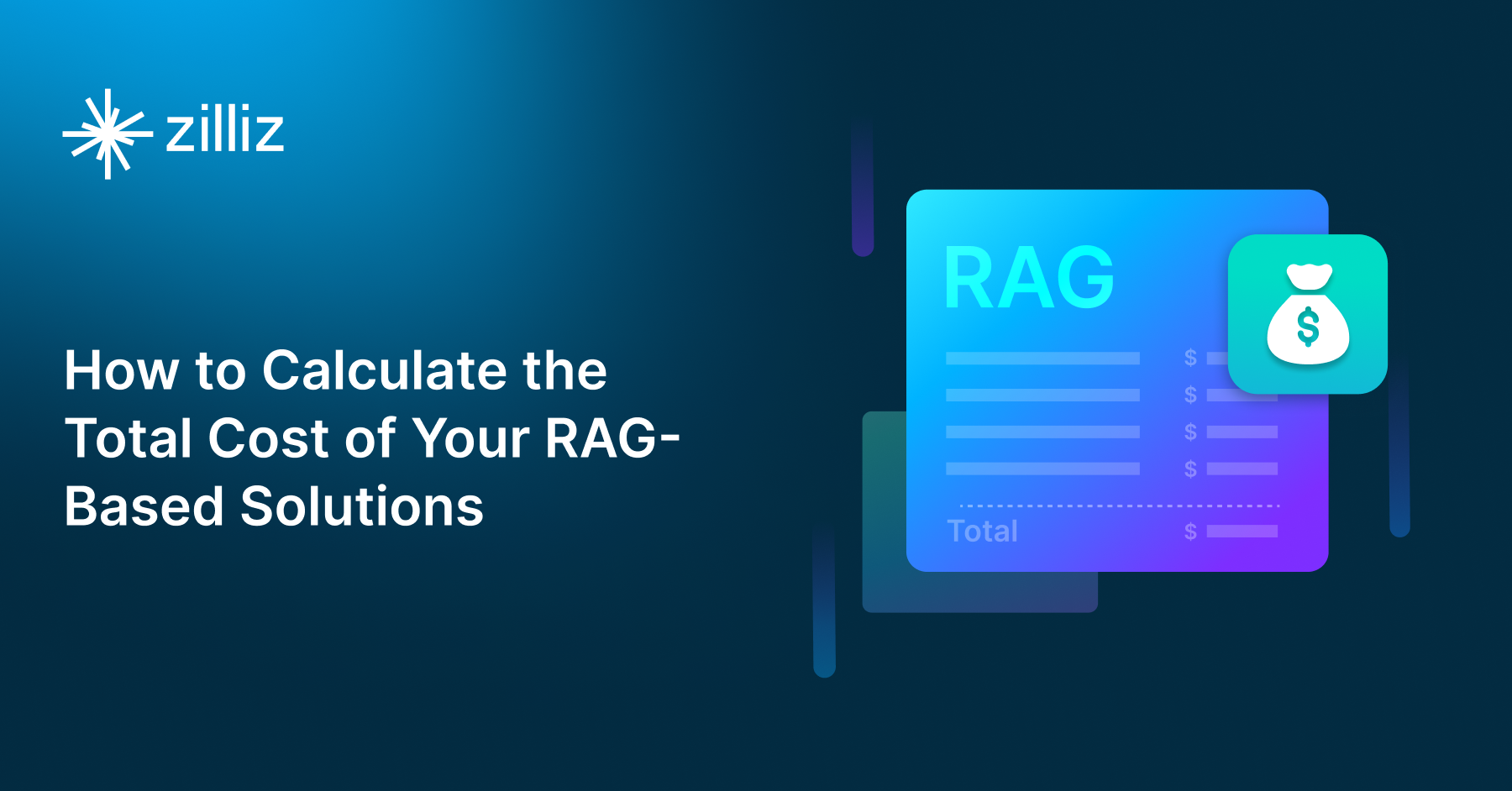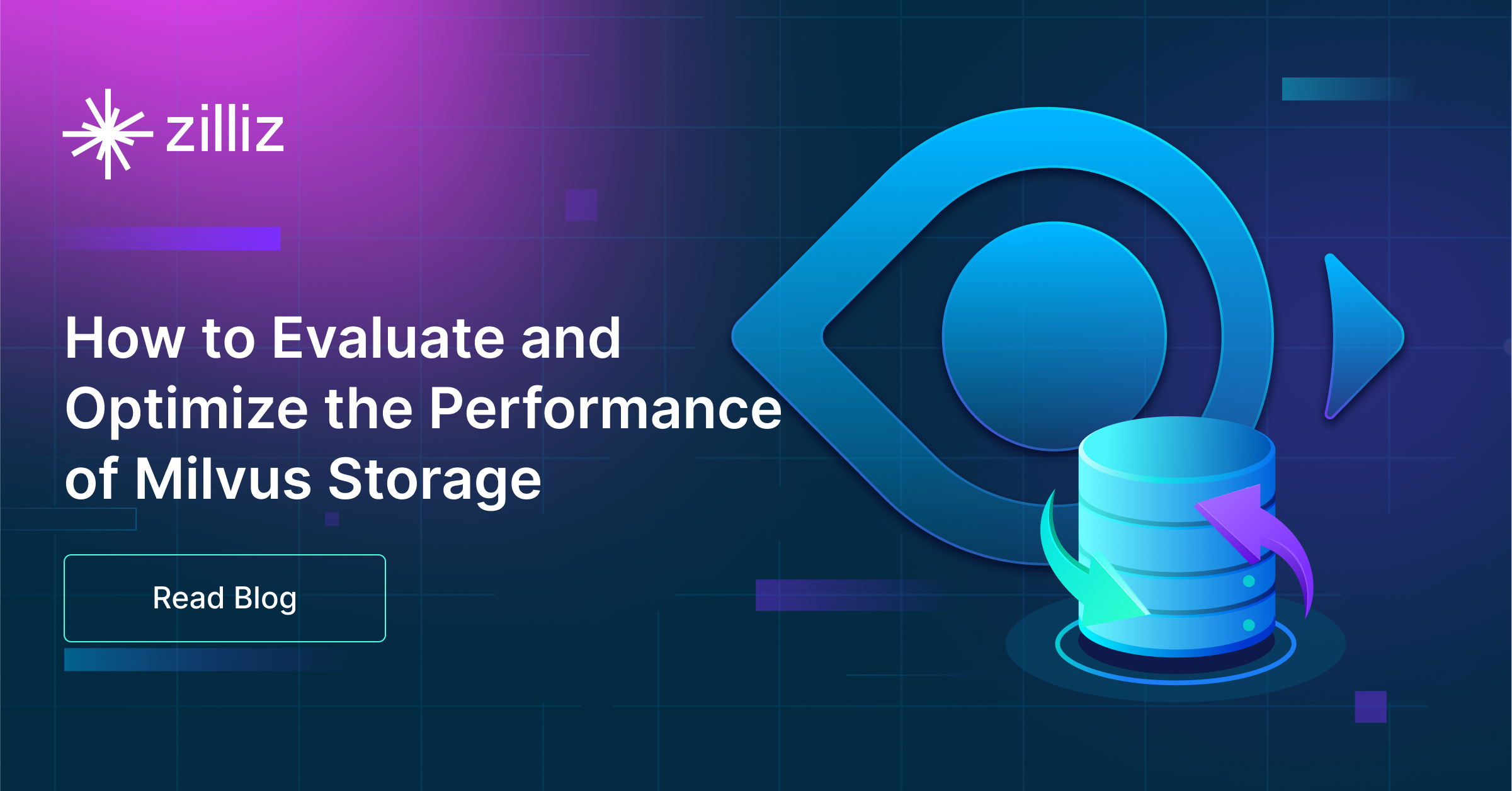Build RAG Chatbot with Haystack, Zilliz Cloud, STACKIT Mistral-Nemo-Instruct-2407-FP8, and STACKIT e5-mistral-7b-instruct
Introduction to RAG
Retrieval-Augmented Generation (RAG) is a game-changer for GenAI applications, especially in conversational AI. It combines the power of pre-trained large language models (LLMs) like OpenAI’s GPT with external knowledge sources stored in vector databases such as Milvus and Zilliz Cloud, allowing for more accurate, contextually relevant, and up-to-date response generation. A RAG pipeline usually consists of four basic components: a vector database, an embedding model, an LLM, and a framework.
Key Components We'll Use for This RAG Chatbot
This tutorial shows you how to build a simple RAG chatbot in Python using the following components:
- Haystack: An open-source Python framework designed for building production-ready NLP applications, particularly question answering and semantic search systems. Haystack excels at retrieving information from large document collections through its modular architecture that combines retrieval and reader components. Ideal for developers creating search applications, chatbots, and knowledge management systems that require efficient document processing and accurate information extraction from unstructured text.
- Zilliz Cloud: a fully managed vector database-as-a-service platform built on top of the open-source Milvus, designed to handle high-performance vector data processing at scale. It enables organizations to efficiently store, search, and analyze large volumes of unstructured data, such as text, images, or audio, by leveraging advanced vector search technology. It offers a free tier supporting up to 1 million vectors.
- STACKIT Mistral-Nemo-Instruct-2407-FP8: An instruction-tuned AI model optimized for efficient, real-time natural language processing. Combining Mistral’s robust language capabilities with Nemo’s scalability, it excels in low-latency text generation, query resolution, and task automation using FP8 precision. Ideal for resource-constrained environments, customer support automation, and edge-computing applications requiring rapid, accurate responses.
- STACKIT e5-mistral-7b-instruct: A 7B-parameter language model optimized for instruction-based tasks, delivering efficient, context-aware responses. Excels in natural language understanding, scalability, and low-latency performance. Ideal for enterprise automation, customer support, technical documentation, and generating structured outputs from complex prompts. Combines precision with adaptability for business-critical AI applications.
By the end of this tutorial, you’ll have a functional chatbot capable of answering questions based on a custom knowledge base.
Note: Since we may use proprietary models in our tutorials, make sure you have the required API key beforehand.
Step 1: Install and Set Up Haystack
import os
import requests
from haystack import Pipeline
from haystack.components.converters import MarkdownToDocument
from haystack.components.preprocessors import DocumentSplitter
from haystack.components.writers import DocumentWriter
Step 2: Install and Set Up STACKIT Mistral-Nemo-Instruct-2407-FP8
STACKIT is the cloud and colocation provider of the Schwarz Group. We can use different models on its cloud services with ease through its API.
pip install stackit-haystack
from haystack_integrations.components.generators.stackit import STACKITChatGenerator
from haystack.dataclasses import ChatMessage
generator = STACKITChatGenerator(model="neuralmagic/Mistral-Nemo-Instruct-2407-FP8")
Step 3: Install and Set Up STACKIT e5-mistral-7b-instruct
pip install stackit-haystack
from haystack_integrations.components.embedders.stackit import STACKITTextEmbedder
from haystack_integrations.components.embedders.stackit import STACKITDocumentEmbedder
text_embedder = STACKITTextEmbedder(model="intfloat/e5-mistral-7b-instruct")
document_embedder = STACKITDocumentEmbedder(model="intfloat/e5-mistral-7b-instruct")
Step 4: Install and Set Up Zilliz Cloud
pip install --upgrade pymilvus milvus-haystack
from milvus_haystack import MilvusDocumentStore
from milvus_haystack.milvus_embedding_retriever import MilvusEmbeddingRetriever
document_store = MilvusDocumentStore(connection_args={"uri": ZILLIZ_CLOUD_URI, "token": ZILLIZ_CLOUD_TOKEN}, drop_old=True,)
retriever = MilvusEmbeddingRetriever(document_store=document_store, top_k=3)
Step 5: Build a RAG Chatbot
Now that you’ve set up all components, let’s start to build a simple chatbot. We’ll use the Milvus introduction doc as a private knowledge base. You can replace it your own dataset to customize your RAG chatbot.
url = 'https://raw.githubusercontent.com/milvus-io/milvus-docs/refs/heads/v2.5.x/site/en/about/overview.md'
example_file = 'example_file.md'
response = requests.get(url)
with open(example_file, 'wb') as f:
f.write(response.content)
file_paths = [example_file] # You can replace it with your own file paths.
indexing_pipeline = Pipeline()
indexing_pipeline.add_component("converter", MarkdownToDocument())
indexing_pipeline.add_component("splitter", DocumentSplitter(split_by="sentence", split_length=2))
indexing_pipeline.add_component("embedder", document_embedder)
indexing_pipeline.add_component("writer", DocumentWriter(document_store))
indexing_pipeline.connect("converter", "splitter")
indexing_pipeline.connect("splitter", "embedder")
indexing_pipeline.connect("embedder", "writer")
indexing_pipeline.run({"converter": {"sources": file_paths}})
# print("Number of documents:", document_store.count_documents())
question = "What is Milvus?" # You can replace it with your own question.
retrieval_pipeline = Pipeline()
retrieval_pipeline.add_component("embedder", text_embedder)
retrieval_pipeline.add_component("retriever", retriever)
retrieval_pipeline.connect("embedder", "retriever")
retrieval_results = retrieval_pipeline.run({"embedder": {"text": question}})
# for doc in retrieval_results["retriever"]["documents"]:
# print(doc.content)
# print("-" * 10)
from haystack.utils import Secret
from haystack.components.builders import PromptBuilder
retriever = MilvusEmbeddingRetriever(document_store=document_store, top_k=3)
text_embedder = STACKITTextEmbedder(model="intfloat/e5-mistral-7b-instruct")
prompt_template = """Answer the following query based on the provided context. If the context does
not include an answer, reply with 'I don't know'.\n
Query: {{query}}
Documents:
{% for doc in documents %}
{{ doc.content }}
{% endfor %}
Answer:
"""
rag_pipeline = Pipeline()
rag_pipeline.add_component("text_embedder", text_embedder)
rag_pipeline.add_component("retriever", retriever)
rag_pipeline.add_component("prompt_builder", PromptBuilder(template=prompt_template))
rag_pipeline.add_component("generator", generator)
rag_pipeline.connect("text_embedder.embedding", "retriever.query_embedding")
rag_pipeline.connect("retriever.documents", "prompt_builder.documents")
rag_pipeline.connect("prompt_builder", "generator")
results = rag_pipeline.run({"text_embedder": {"text": question}, "prompt_builder": {"query": question},})
print('RAG answer:\n', results["generator"]["replies"][0])
Optimization Tips
As you build your RAG system, optimization is key to ensuring peak performance and efficiency. While setting up the components is an essential first step, fine-tuning each one will help you create a solution that works even better and scales seamlessly. In this section, we’ll share some practical tips for optimizing all these components, giving you the edge to build smarter, faster, and more responsive RAG applications.
Haystack optimization tips
To optimize Haystack in a RAG setup, ensure you use an efficient retriever like FAISS or Milvus for scalable and fast similarity searches. Fine-tune your document store settings, such as indexing strategies and storage backends, to balance speed and accuracy. Use batch processing for embedding generation to reduce latency and optimize API calls. Leverage Haystack's pipeline caching to avoid redundant computations, especially for frequently queried documents. Tune your reader model by selecting a lightweight yet accurate transformer-based model like DistilBERT to speed up response times. Implement query rewriting or filtering techniques to enhance retrieval quality, ensuring the most relevant documents are retrieved for generation. Finally, monitor system performance with Haystack’s built-in evaluation tools to iteratively refine your setup based on real-world query performance.
Zilliz Cloud optimization tips
Optimizing Zilliz Cloud for a RAG system involves efficient index selection, query tuning, and resource management. Use Hierarchical Navigable Small World (HNSW) indexing for high-speed, approximate nearest neighbor search while balancing recall and efficiency. Fine-tune ef_construction and M parameters based on your dataset size and query workload to optimize search accuracy and latency. Enable dynamic scaling to handle fluctuating workloads efficiently, ensuring smooth performance under varying query loads. Implement data partitioning to improve retrieval speed by grouping related data, reducing unnecessary comparisons. Regularly update and optimize embeddings to keep results relevant, particularly when dealing with evolving datasets. Use hybrid search techniques, such as combining vector and keyword search, to improve response quality. Monitor system metrics in Zilliz Cloud’s dashboard and adjust configurations accordingly to maintain low-latency, high-throughput performance.
STACKIT Mistral-Nemo-Instruct-2407-FP8 optimization tips
To optimize STACKIT Mistral-Nemo-Instruct-2407-FP8 in a RAG setup, ensure input prompts are concise and contextually enriched with retrieved documents, truncating irrelevant sections to stay within the 4k token limit. Leverage FP8 precision for faster inference by enabling compatible hardware acceleration (e.g., NVIDIA Tensor Cores). Batch process queries when possible, and fine-tune retrieval thresholds to balance relevance and noise. Use caching for frequent queries, and monitor latency to adjust chunk sizes or parallelize document processing. Regularly validate outputs against ground truth to refine retrieval-model alignment.
STACKIT e5-mistral-7b-instruct optimization tips
To optimize STACKIT e5-mistral-7b-instruct in RAG, ensure input context is well-structured with clear document chunks (≤512 tokens) and metadata for precise retrieval. Use dynamic temperature and top-p sampling to balance creativity and relevance. Fine-tune retrieval thresholds to minimize irrelevant context injection. Batch process queries for GPU efficiency, and enable FlashAttention for faster inference. Precompute embeddings for static data to reduce latency. Regularly evaluate retrieval accuracy and model outputs via metrics like Hit Rate and ROUGE, adjusting prompts and chunk sizes iteratively.
By implementing these tips across your components, you'll be able to enhance the performance and functionality of your RAG system, ensuring it’s optimized for both speed and accuracy. Keep testing, iterating, and refining your setup to stay ahead in the ever-evolving world of AI development.
RAG Cost Calculator: A Free Tool to Calculate Your Cost in Seconds
Estimating the cost of a Retrieval-Augmented Generation (RAG) pipeline involves analyzing expenses across vector storage, compute resources, and API usage. Key cost drivers include vector database queries, embedding generation, and LLM inference.
RAG Cost Calculator is a free tool that quickly estimates the cost of building a RAG pipeline, including chunking, embedding, vector storage/search, and LLM generation. It also helps you identify cost-saving opportunities and achieve up to 10x cost reduction on vector databases with the serverless option.
 Calculate your RAG cost
Calculate your RAG cost
What Have You Learned?
By diving into this tutorial, you’ve unlocked the power of combining cutting-edge tools to build a Retrieval-Augmented Generation (RAG) system from scratch! You learned how Haystack acts as the orchestration framework, seamlessly tying together components like a conductor leading an orchestra. With Zilliz Cloud as your vector database, you saw firsthand how to store and retrieve embeddings at scale, turning unstructured data into searchable knowledge. The STACKIT Mistral-Nemo-Instruct-2407-FP8 model became your LLM powerhouse, generating human-like responses by leveraging the context fetched from Zilliz, while the STACKIT e5-mistral-7b-instruct embedding model transformed text into rich numerical representations, ensuring your RAG system understands nuances in your data. Together, these tools form a pipeline that’s greater than the sum of its parts—ingesting data, retrieving relevant context, and generating precise answers with speed and accuracy.
But this tutorial didn’t stop there! You also picked up pro tips for optimizing performance, like fine-tuning chunk sizes for embeddings and balancing latency with quality. The inclusion of a free RAG cost calculator gave you a practical tool to estimate expenses and scale your projects smartly. Now, you’re equipped not just to build RAG systems but to innovate them—experiment with hybrid search strategies, tweak models for domain-specific tasks, or even integrate multimodal data. The future of AI-driven applications is in your hands. So, what’s next? Start tinkering, deploy your first prototype, and watch your ideas come to life. The tools are here, the knowledge is yours—go build something amazing and redefine what’s possible with RAG! 🚀
Further Resources
🌟 In addition to this RAG tutorial, unleash your full potential with these incredible resources to level up your RAG skills.
- How to Build a Multimodal RAG | Documentation
- How to Enhance the Performance of Your RAG Pipeline
- Graph RAG with Milvus | Documentation
- How to Evaluate RAG Applications - Zilliz Learn
- Generative AI Resource Hub | Zilliz
We'd Love to Hear What You Think!
We’d love to hear your thoughts! 🌟 Leave your questions or comments below or join our vibrant Milvus Discord community to share your experiences, ask questions, or connect with thousands of AI enthusiasts. Your journey matters to us!
If you like this tutorial, show your support by giving our Milvus GitHub repo a star ⭐—it means the world to us and inspires us to keep creating! 💖
- Introduction to RAG
- Key Components We'll Use for This RAG Chatbot
- Step 1: Install and Set Up Haystack
- Step 2: Install and Set Up STACKIT Mistral-Nemo-Instruct-2407-FP8
- Step 3: Install and Set Up STACKIT e5-mistral-7b-instruct
- Step 4: Install and Set Up Zilliz Cloud
- Step 5: Build a RAG Chatbot
- Optimization Tips
- RAG Cost Calculator: A Free Tool to Calculate Your Cost in Seconds
- What Have You Learned?
- Further Resources
- We'd Love to Hear What You Think!
Content
Vector Database at Scale
Zilliz Cloud is a fully-managed vector database built for scale, perfect for your RAG apps.
Try Zilliz Cloud for Free


